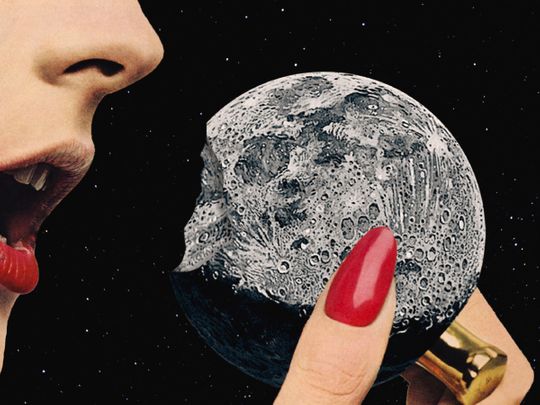
Buzz Aldrin, very religious, brought to the moon a consecrated host, he took communion once he stepped upon the Moon. Aside from this deviation, the typical Apollo 11 menu began with rice soup with beef and crackers, followed by a chicken sandwich, cottage cheese salad, and a slice of rum Gugelhupf, all accompanied by coffee or sweet tea. The dishes had been heat-treated and presented in boxes or soft pouches, similar to military rations. And yet, for years now, tales and legends have seen the germination of strange ideas relating to food products.
The elixir of long life
This mystical vision of food on the moon is reflected in the Chinese legend of the jade rabbit, inspired by the appearance of a rabbit and a mortar on the visible face of the Moon. This optical illusion has influenced many Asian and Amerindian cultures. In the Chinese version, the rabbit prepares the elixir of long life in the mortar and offers it to the moon goddess Chang’e (hence the name given to the Chinese missions to land on the noon their Yutu robot-rover, the latter meaning ‘Jade Rabbit’).
Chinese alchemists believed that an adequate mix of mercury, sulphur and cyanide provided immortality, which is unlikely, given the rather toxic nature of such a cocktail. In the Korean and Japanese versions of this legend, it is a rice cake or ‘mochi’ that the rabbit prepares for the goddess of the noon, and in the Amerindian versions, the rabbit offers itself as food, gaining by this sacrifice a reputation of great nobility. In any case, association with the noon implies the sublimation of food thus losing its material character to take on a transcendental dimension.
A fine bottle of burgundy
In Jule Verne’s From the Earth to the Moon we learn from the passengers of this rocket that, as far as the pleasures of the palate went, nothing was neglected. Their lunch begins with a tablet-based broth, “prepared with the best pieces of ruminants of the Pampas”, succeeded by some beefsteaks compressed by a hydraulic press, all served with a fine bottle of Nuits-Saint-Georges, the Burgundy par excellence. Buzz Aldrin also had a drop of wine that he’d stashed aboard Apollo 11.
Smoke and the Tree of Knowledge
We are not so far from the fantasy of Cyrano de Bergerac, the reference of the play by Edmond Rostand, also author of one of the first science-fiction books at the turn of the seventeenth century, The States and Empires of the Moon and the Sun. Cyrano imagined that the Selenites (inhabitants of the Moon) were only nourished by a spiritual food or, as he explains in his book: “Here we live on steam. The art of Cookery is to shut up in great Vessels, made on purpose, the Exhalations that proceed from the meat, whilst it is a dressing; and when they have provided enough of several sorts, and several tastes, according to the Appetite of those they treat; they open one Vessel where that Steam is kept, and after that another; and so on till all the Company be satisfied.” This propensity to be content with a purely fragrant cuisine is explained by the fact that the Moon is, according to Cyrano de Bergerac, the place where the Tree of Knowledge produced that infamous apple that cost Adam and Eve their place in paradise. The Selenites are thus content with eating nothing.


